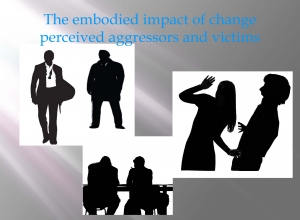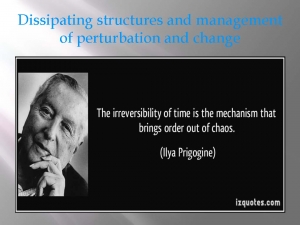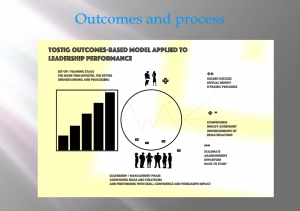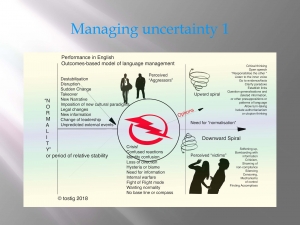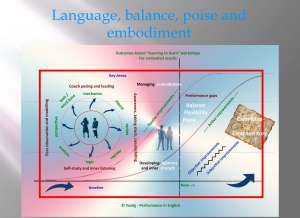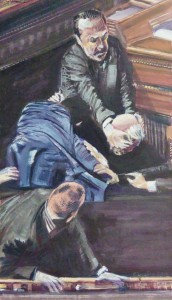This workshop will develop practice around the coach in a facilitator role when helping manage communication and self-awareness problems caused by a destabilising scenario.
I will build on the more theoretical aspects of last year’s session (which explained cross-overs between language teaching, learning and acquisition, with outcomes-based, target-oriented and process-based methods adopted by coaches or trainers) and, using the subject’s own personal experience of destabilising situations, develop an embodied practice, using an entirely flexible approach that allows for feedback and both objective and subjective improvements. This will be mainly a stand-up workshop, where the nature of destabilisation – within organisations and the bodily experience – based on personal experiences and systems and organisational theory, will be examined. The workshop is tabled to last 2 hours but could go on longer. A manageable number for this is around 12 persons max.
The coach develops skills that help the subject to grow in embodied self-awareness and social awareness, embodied self-management and social management while at the same time exploring his/her own levels of linguistic awareness. This process allows for the emergence of new language to better manage destabilised scenarios, that each person is comfortable with, and to observe how this works, making for more congruent behaviours and the internalising of processes by awareness of one’s inner dialogue. In so doing we explore the fascinating connection between our visualisation of situations, the feelings these create, and the language used to explain them and to communicate histories, goals and intentions. This has value for learners of all sorts.
This will be a stand-up workshop built around story-telling and exploring how language is processed and experienced. It will involve reenacting (extemporising or relating, declaring, expressing and manifesting) and then rehearsing and effectuating new approaches in embodied practice to manage and lead others involved in destabilising scenarios. It also means that the linguistic output can be evaluated and learned better.
Make sure you come with a destabilising scenario to recount!
Thank you to all who came to the embodied workshop at YorkStJohn and I greatly enjoyed it! Sadly, though, with any short workshop there wasn’t the time needed to show how the protocols work in a coaching environment based n real situations and embodied principles.
I plan to give a half-day demonstration in the York Coaching week in 2019, this will permit the development of personal protocols in language and take further the 3-step protocols I introduced briefly on Tuesday.
Embodied practice is anything but theoretical. Having an awareness of the links to semantics and semiotics, chao-dynamics and not to mention the social sciences, mental, emotional and physical health; or systems analysis, helps in seeing the mutual effects of communication; in a way these theoretical points are fairly insignificant once the embodied practice is experienced.
This works far better in small groups of no more than 6 (using video recording of performance too); presenting it to large groups leaves little time for the peer observation and discovery.
Embodied practice of the chao-dynamics of destabilisation is an antidote to the (in my opinion) over-mentation and left-brained-ness that comes with so much theory – it rehearses in essential ways how to carry out on our feet the things that we read about in books and that in the heat of the moment are forgotten. As with any actor on stage, “turning up for the show” and wondering about a ‘toxic’ reaction, is not enough, considerable rehearsal and language review will go a long way.
It examines the fundamental links to language and specifically the difference between an “Illocutionary Act” and its “Perlocutionary Force” and allows for a graceful and impactful style that reverses destabilisation, it converts the downward spiral that is systemic in all organisations, into an upward one, using protocols that are rehearsed in changing scenarios based on real experience, with the coach, in an embodied way.
Chao-dynamics workshopHow does the process of Destabilisation work and how can we better manage it?
PART ONE
It’s important at definitive moments to feel that we can say what needs, or has, to be said, and, where possible, in harmony with the pervading culture or established context.
The emperor with no clothes
Playing the Devil’s advocate is the antidote when certain things are not meant to be said. Having the freedom to speak and being able to speak openly is the mark of a healthy world. Is the coaching we do a kind of atom bomb dropped next to a person’s flickering candle only to walk away surprised that the candle remains unlit – or has been snuffed out for good? Or does the candle burn brightly and more strongly?
The Sinclair C5
Sir Clive Sinclair famously used the millions made from the Spectrum computer, to put the world’s first electric car onto the production line. His design team wanted to tell him all that was wrong with it, and why it was doomed to failure – but they didn’t.
The paradox is that people are in positions in reality doing the opposite of what they are meant to do or say they are doing. Is this accidental, or by design, or might it be due to fear or confusion or panic? It may even be that they are part of a destabilisation culture, and have no other option, are trapped; or could it be that they are playing a role, wearing a mask, or are sociopaths?
The corporation
Scary as it seems, as the documentary film, “The Corporation”, by Mark Achbar, ably shows, corporations do indeed have a tendency to develop sociopaths, people who can just “perform” without having a moral base. The society of Skinner’s “Walden 2” may really be quite close… It’s this unsettling paradox and sense of incongruence that leads us to feel out of control – even to question our senses at times – and that language is insufficient to express the reality of our own experience.
People today
In a world where the saturation of information is everywhere, knowing who or what is in authentic or in-authentic mode, is well-nigh impossible, apart from by using one’s gut instinct. Where does the needed subjective support come from? …. Let a flock of sheep go into a field and they will not know where to go, except at first as a collective group. Arguably, in primitive times, Mankind didn’t have a strong idea of self; maybe an ancient trauma led to collective amnesia and divorce from a more ‘innocent’ state, after which came the birth of “self” (the ego), and with it, the externalisation of one’s inner voice and the misunderstanding of what this “voice” is. In other words, we began to feel that we are each alone in this life, in some terrible way.
Narratisation and The Westworld
Lisa Feldman Barrett,
in “How Emotions are Made”, has gone so far as to evidence the fact that our emotions are simply psychological constructs expressed in language and have no a-priori existence in a pre-programmed natural way. As Julian Jaynes theorised in his famous book “The Breakdown of the Bicameral Mind” in 1976, the stories we make up in our heads with ourselves as the main characters, are sometimes without reason or purpose; they just ‘are’ and we don’t know why, or what for, except by creating “reasonable explanations” given by other voices within our heads. Thus the ‘knowledge’ that was the inner ‘instruction from the visible gods or invisible God’ of the Greeks and a fter them the monotheists, in the form of a muse or command or ‘story to make sense of life’ broke down and required ever-more complex justifications. This has been brilliantly demonstrated to be the theoretical basis for the entire Westworld series.
fter them the monotheists, in the form of a muse or command or ‘story to make sense of life’ broke down and required ever-more complex justifications. This has been brilliantly demonstrated to be the theoretical basis for the entire Westworld series.
Today, the bombardment of external voices on our consciousness has even greater impact on subconscious processing than ever, therefore, giving time to the processing stage or any activity, and to enabling a good amount of self-composition and mental and physical rehearsal, is critical! Just ‘showing up for the show’ and letting our inner voices take over, is not enough, as any observer of street mind-hacking, of Derren Brown, or close-up magic, knows!!
Politics, society and the mind
A good illustration of this on the collective level can be found in theories of cultural change, as they were developed and then used in psychological warfare and in subversion tactics (cf Babeuf, Levi, Marcuse, Gramschi etc..) and later – in the C20th – for world warfare. Arguably we are still dealing with this.
The negative ‘stages’ of Demoralisation, Destabilisation, Crisis, and Normalisation (all natural emotions that we are forced to pay no heed to, under the stress-control of peer pressure and collective will) have been theorised, developed and practised, for 200 years or more – way back even to Machiavelli. There is a best-selling manual, by R, Greene, the 48 Laws of Power that shows how these tactics are used; “amoral, cunning, ruthless, and instructive, this New York Times bestseller is the definitive manual for anyone interested in gaining, observing, or defending against ultimate control.”
Crisis and how to manage it
Demoralising equates with softening up and bombarding others with information and criticism, it leads to identity loss via the shaming of non-compliance and often we never know why we feel out of sorts. Acts or words are used that are felt as being violent by dint of introducing sudden changes, silencing and censoring, and there may be false narratives claiming problems exist when to all around it all seemed like ‘business as usual’. This can be combined with setting up mechanisms of control, even by blackmail and the use of easy victims & ‘useful idiots’ or via trusted accomplices.
Demotivating – in a very negative sense – is conscious or subconscious agitation (either from within or without) in an attempt to overthrow what is normal; this can be a planned destabilisation in order to take over control. This very real physical problem (of the problem – reaction – solution type expounded in the Hegelian Dialectic) continues with gradual  disempowerment and the imposition of new narrative, culture or set of core values. This can of course be presented as a very positive thing (and may indeed be, while still being received as ‘negative’ to those on the ‘receiving end’) and is further reinforced by the appropriation of education and knowledge. Whereas the intention may to to empower and enfranchise others, disenfranchisement may be the outcome. In many senses, the coach’s work begins here to reverse the impending sense of alienation, by working to re-establish truth and objectivity, establishing the principle of free speech and trust, by bridging differences.
disempowerment and the imposition of new narrative, culture or set of core values. This can of course be presented as a very positive thing (and may indeed be, while still being received as ‘negative’ to those on the ‘receiving end’) and is further reinforced by the appropriation of education and knowledge. Whereas the intention may to to empower and enfranchise others, disenfranchisement may be the outcome. In many senses, the coach’s work begins here to reverse the impending sense of alienation, by working to re-establish truth and objectivity, establishing the principle of free speech and trust, by bridging differences.
Crisis is recognised in confused reactions and more identity confusion, loss of direction, hysteria, blame and so on. There may be internal warfare, both in the collective and in the individual him/herself. The coach here listens and acts to “give responsibility to the other person for their words” and to insist on a clear use of words, and ensures that those that use them, clarify and provide evidence/facts, by then clarify paradoxes, establishing clear  links, and questioning generalisations and unspecified references, deleted information, universals, or others’ presuppositions or patterns of language..
links, and questioning generalisations and unspecified references, deleted information, universals, or others’ presuppositions or patterns of language..
By Normalising we refer to how the “new régime” establishes order after the revolution of ideas. This is done by persuasion, force and – if necessary – the cleansing of cultural or political opposition and the elimination of useful idiots. In the political arena this game is very dirty, yet, and sad to say, the idea of “normalisation” has crept into our vocabulary in more ways that just that of political history. The coach here has a difficult task in liberating one who is at a stalemate or downward spiral, and challenging those who are perceived as aggressors – whether in fact they are the ‘superior’ or ‘inferior’ person in the dominance hierarchy – to think critically; open speech and the freedom to say what is “unacceptable” is very important if this phase is not to explode in the face of the agents of change, and some conscious opposition towards authoritarianism – or utopian thinking – is necessary.
Cui Bono?
Looking at a “positive” side to this can say that the coach works with PERCEPTIONS in language with the ‘aggressor’ (the one perceived to have caused the de-stabilisation) and the ‘victim’ to establish facts in a neutral way, working openly to the idea that the person in question may indeed intend to be aggressive or might benefit from being perceived as a victim. Are they? To whose benefit is it?
PART TWO
To manage destabilisation we need to work on embodied responses.
Embodied states

Stollie makes his way through the weave poles during the agility portion of the Purina Dog Show Incredible Dog Challenge
Since of course the feeling of destabilisation is very much felt bodily as well as mentally, we can work with embodiment practices to better manage the situation.
The work of coaches such as Paul Linden, Mark Walsh, Integration Training, Strozzi-Heckler, George Leonard, and Wendy Palmer, mention the tools and practices that can make it easier to be a skilful listener, a powerful advocator and an inspirational leader. Dylan Newcomb advocates “a new kind of language” – one that speaks to and engages one’s whole mind and body as one dynamic, integrated process. “It’s an embodied practice for self and life mastery”.
We can consider 5 physical axes that lead to better AGILITY
1) vertical (rootedness, having spine and centre),
2) left to right (occupying space, pivoting and having poise and balance)
3) forward and back (distance or urgency/connection)
4) time (and timeliness, allowing reflexion and processing to happen)
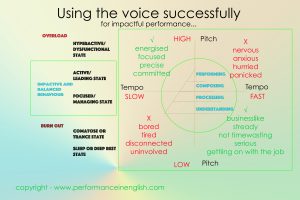
Pitch and Tempo and using the voice to impact performance.
5) voice (entering the space with the right combination of sound, pitch, tempo and rhythm)
Chao-dynamics
Managing crisis implies a radical use of language to oppose the natural tendency to dissipation and destabilisation in complex systems.
Combined with this we may also consider how to mange the language in order to clarify and build bridges, or remove them – as may be necessary for a mutually-beneficial outcome to emerge.
This method is based on a view of human interaction developed from the work of Ilya Prigogine. Viscount Ilya Romanovich Prigogine 25 January 1917 – 28 May 2003) a Belgian physical chemist and Nobel Laureate noted for his work on dissipative structures, complex systems, and irreversibility. Prigogine developed the concept – at the University of Austin in Texas – of “dissipative structures” to describe the coherent space-time structures that form in open systems in which an exchange of matter and energy occurs between a system and its environment. 
The theory of Chaodynamics and Prigogine’s the idea of a what he called a “concentric” approach to nature/communication to reestablish order during a major disruption takes us into the bodily and emotional reactions that infuse the system of both the individual and the environment or collective group.
Work Styles
Stress and the sense that we are opposed in our will, tends to make people revert more and more to a default style, approach or set of rules. Fighting the frame tends to make matters worse! One way out is to provide or explore options; again, it’s often about how these options are framed and what the metaphorical image is.
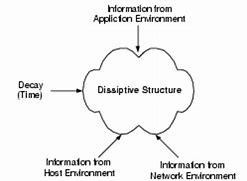
Everything conspires to structure dissipating over time
Jordan Peterson (somewhat unpopularly at times perhaps) asks us to ‘be hard with ourselves’, and to first be ‘welcome in your own house’. By this he means, remembering that even (or especially) the mundane things we do need to be got right. “Being better verbally doesn’t mean that we are right”, he says, referring to how the relationship between one’s belief system and one’s perceived Dominance Hierarchy Position or Confidence Hierarchy is a source of inner struggle, confusion and concerns about status. Why, then, people “need to defend themselves” – even if they may deep down know they are wrong (or perhaps because of this)! – and this demonstrates how social constructivism and politics can’t be separated from language use and the way we embody it.
Perhaps language is our – maybe futile – attempt to make sense of a meaningless world, as Kierkegaard would say.
Your base line state
When a person is reacting to destabilisation it’s important for them to have an awareness of how to access their natural base-line state. Accessing their comfortable state while trying to understand the new state avoids tit-for-tat and self-defensiveness; it means they can start to make sense of things. Embodying a newly generated state may even mean not liking the ‘new person’ that emerges. What that person is, is not for the coach to choose.
The Coach’s role

“Control the options and you control the power” may be good in theory; oftentimes a person is too far from the source of power to feel in any sense capable of restoring order into the chaos. Their only control may be over their own bodies and words in the immediate conversation.
A coach can help another person to be more agile and lucid by means of providing time, perspective, and the opportunity to process a rapidly-evolving situation, and compose themselves for when they need to perform again.
A good starting point might be, ‘what options would you choose/prefer to have when you re-enter the situation?’
Generative Coaching – with no fixed outcomes – or clearly scaffolded?
 We can contrast and Fixed-Outcomes language learning model with the evidence of Natural language acquisition. Stephen Kraschen’s L+1 theory and research show that the time for the acquisition of new models of language (i.e. taking ownership of one’s language given ample processing and self-composition) can be as much as 6 months
We can contrast and Fixed-Outcomes language learning model with the evidence of Natural language acquisition. Stephen Kraschen’s L+1 theory and research show that the time for the acquisition of new models of language (i.e. taking ownership of one’s language given ample processing and self-composition) can be as much as 6 months
ZPD
Another (more scaffolded) approach is that of ZPD. The zone of proximal development, often abbreviated as ZPD, is the difference between what a learner evolving a new skill or prepping a desired outcome, can do without help, and what they can’t do. This concept was introduced (but not fully developed) by psychologist Lev Vygotsky (1896–1934)
The concept of the ZPD is widely used to study children’s development as it relates to education. The ZPD concept is seen as a scaffolding, a structure of “support points” for performing an action, referring to the help or guidance received from an adult or more competent peer to permit the child to work within the ZPD.
 The “scaffolding” – of which coaching is perhaps just one part – consists of a variety of supports. These supports may include: resources, such as a compelling task; templates and guides; specific guidance on the development of cognitive and social skills; and finally the use of instructional scaffolding in various contexts when modelling a task and the approach to solving the task, by giving advice and providing coaching.
The “scaffolding” – of which coaching is perhaps just one part – consists of a variety of supports. These supports may include: resources, such as a compelling task; templates and guides; specific guidance on the development of cognitive and social skills; and finally the use of instructional scaffolding in various contexts when modelling a task and the approach to solving the task, by giving advice and providing coaching.
Since the aim is for the client to reach an embodied state of readiness where he/she is able in the present to “bring forward the emerging future” these supports are gradually removed as students/coachees develop their own autonomous learning strategies. In this way the coach becomes less necessary, thus promoting the client’s own cognitive, affective and – critically – psychomotor learning skills and knowledge.
Just as in the educational taxonomy, where teachers help the students master a task or a concept by providing support, so coaches can provide scaffolding support. The support can take many forms such as outlines, recommended documents, storyboards, or key questions.
Yes, master
In some cases (and cultures) the coach is viewed as a master communicator of language – not specifically one who has all the answers, more one who can empower the client to find them. Scaffolding works as the good coach  makes themself “progressively less necessary” and the building eventually stands up alone.
makes themself “progressively less necessary” and the building eventually stands up alone.
Trusting overly in the coach’s input can however lead to further destabilisation.
The key to embodiment (what NLP calls “anchoring states”) is in doing things in a real embodied environment, and not a BOOK environment.
Or, as Alfred Korzybsky said, “the map is not the territory”.
This then is the area of interest between the linguistic insights of language acquisition, and of coaching, and points to how a generative approach can work, to which we will return…..
Types of scaffolding
For scaffolding to be effective, attention can be paid to the following:
-
The selection of the task: The task should ensure that learners actually use the developing skills that they want to master. The task should be engaging and interesting to keep them involved!
-
The anticipation of errors: After choosing the task, the teacher/coach might anticipate “errors” that are likely to be committed when working on the task. In outcomes-based education, anticipation of errors enables the scaffolder to properly guide the learners away from “ineffective directions”. When the outcome is fluid and unknown, however, “errors” are for the coachee, student or client alone to determine for themselves.
-
The application of scaffolds during the learning task: Scaffolds can be organized as simple/discreet skill acquisition – or they may be dynamic and generative.
-
The consideration of emotive or affective factors: Scaffolding is not limited to a cognitive skill but also relates to emotive and affect factors. During the task the scaffolder (implied expert) might need to manage and control for frustration and loss of interest that could be experienced by the learner. In this way encouragement is an important scaffolding strategy.
In terms of scaffolding again we can consider:
-
conceptual scaffolding: helping students/clients decide what to consider in learning so as to guide them (or for them to guide themselves) towards key concepts
-
procedural scaffolding: helping the student or coachee to use appropriate tools and resources effectively
-
strategic scaffolding: helping to find alternative strategies and methods to solve complex problems
-
metacognitive scaffolding: prompting to think about what is being learnt throughout the process and assisting reflection on what was learnt (self-assessment).
Other approaches and their relevance to our argument.
From Sir John Whitmore’s GROW, to SMART, many models exist; few however, which touch more on communications and language performance or how to embody this. The Transitional Curve lends useful support as a concept, and Hamlin’s HP equation, Ability x Motivation x Environment, adds the idea that our cognition, commitment and communicative credibility are important. The Contracting Matrix show that it is important to be clear, and adapt our behaviour, and I personally find the Jonari window helpful when working through blind spots and the “dark side” or other more public revelations. Of course, having a clear focus, on options and an action plan, and a way of overcoming obstacles, is always valid, along with the insights given by cross-cultural models and people potential profiles.
In communicative method language training the outcomes-based model used, is along the lines of elicitation -> presentation -> controlled practice -> free practice -> testing and assessment (coupled with copious scaffolding). This approach can be useful when working with new language but tends not to develop real acquisition.
In NLP, the iterative problem-solving strategy TOTE (Test Operate Test Exit) as well as Meta-model and Milton-model approaches to change states, presuppose the subconscious mind’s capacity to find resources that will shift perceptions and abilities, and these bring out subconscious discoveries.
In a generative coaching approach this would likely involve conscious distraction and re-framing by relocating the experience within the physical environment in different ways, and accessing the embodied reactions, as well as giving a lot of time to rehearsal and self-composition, treating ourselves meditatively. It would allow for a less-guided style that is open-ended and creative.

North-West artist Matt Wilde has described how he is concerned with capturing the ‘immediacy’ of those surroundings that people become immersed in. “His technique of applying the paint quickly to the canvas in a perhaps more sketch-like manner lends itself to the fast-paced lifestyles of today’s society that Matt is eager to convey. There is often humour and wit in the scenes that Matt reveals to us, but he also captures those moments of human isolation in the contrasting chaos of busy city life.”
Agility
We look for examples of a physical response when using language in performance. We think about what the voice expresses and where in the body that voice emanates from. The “hook” of the downward spiral can be considered as an “inner terrorist” and is a very unpleasant sensation that affects the body seriously; words are powerful and may in some cases suffice to disarm the perceived threat or to change one’s perception of it; more often, an embodied approach (giving more time for rehearsal and self-composition) will help in ensuring that the intended outcome is a genuinely good performance willed by the person in question and congruent with their sense of best interest.
If the outcome is not pre-determined, then it emerges through language which is always new, and actions that feel right. Life is not a constant prepping for a “test”, so the process and composition and creation of new actions and words are both physical phenomena.
Hence to embody the outcome is to have lived it inwardly and mastered it outwardly, in numerous physical ways, first.
What state are you in?
Do you feel that everything is “normal” and steady – “business as usual”, or in a constant state of flux and uncertainty, giving you an uneasy even scary feeling in the pit of your stomach?

Coaching in York is in a great state!
After a great week at the International Coaching Week in York, during which so many interesting and important things were discussed, and meeting really great coaches, we left feeling inspired and full of ideas. I met or renewed contact with many great and inspiring coaches and language trainers, and we learnt how to be more agile in our work. How though can we help others to be agile?

So many different states to be in!
There were many great themes – how to impact in people’s lives and work, helping them to reach their chosen goals; the in-company experience and culture; the importance of cultural understanding that is seen not as a block to communication but a means to greater discovery of our shared humanity; the immense width and depth of the coaching profession from the volunteer sector here in York and as far away as Sub-Saharan Africa, to how organisational coaching models and profiling techniques and questionnaires are so penetrating, helpful and enlightening; how also to harness the energy of the group or team; about the default working styles we tend to fall back into, and how to intervene even very briefly, in powerful ways, emphasising the importance of basing the conversation on verifiable facts. And these sessions were run in very different settings, in modern office suites, old historic buildings, in a field with horses, online, walking in gardens….
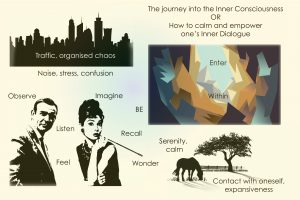
The state of our language
My main interest was how to link the insights of language acquisition science with the framing or contracting of goals or outcomes so that creative solutions may emerge and without adding to any implied sense of failure if the exact original targets or goals are not met. Having a “backwash of expectancy” (as this has been embedded in our thinking from childhood and with the added pressure of schooling and workplace expectations) is a fundamental stress of life, and the coach ought not to reinforce this; so, how to overcome the inevitable sense of destabilisation that impinges on the very coaching conversation itself whether we like it or not?

The state of the world
We know that new language is acquired by “taking ownership” of the words and phrases that we identify with, not merely by mimicking parrot-fashion or in the died-in-the-wool Pavlovian “rewards” or carrot-and-stick style. In the words “new language” I include the “new language” of our Inner Talk and self-talk that we find ourselves echoing – in the chamber of our heads – that results from the constant bombardments of the external world and the plethora of conflicting voices and messages, seemingly and confusingly ever-changing and at odds with one-another. As the conversation moved from psychology to culture to political science to art and music, so we entered new states.
The limitations of language
And one state we commented on is that when one has a different native language, the way the words are processed and “felt” is different, and so is the ability of the language itself to handle notions and experience – some things literally cannot be put into words in the same way or at all.
Our state of awareness
One thing I discussed with more than one person was the now ubiquitous assumption of the existence of “levels of skill” where performing tasks, whether as managers, teachers, sports people, in-company coaches working on goal-oriented matters, or counsellors or therapists helping unfortunates towards a better life, or indeed as coaches working towards a qualification, to become a coach!! And as we moved from place to place, building to building and room to room or person to person, so out awareness, and naturally, our states, changed..

Stating the rules
Needless to say, it is in human nature in many ways to want to apply sets of rules – at the least, mutually-agreed ground rules or group cohesion rules – where a collective endeavour is concerned, and yet, when even we (as experienced coaches) were asked to abide by one-minute or 4-sentence-long self-imposed rules, or to move from table to table at a round-robin event every 15 minutes – and in one session, humorously, on pain of receiving a red card if we did not – we rarely abided by them completely, and conversations in groups could become slightly unevenly balanced and dare I say it, tending towards a more creative even chaotic sort!! This didn’t make them in any sense less enjoyable, in my opinion at least.
Destabilisation is an embodied state
Then I am someone who quite likes the idea of the occasional spanner in the works that throws “the expected” into disarray. Not everyone is the same in this regard, and the “destabilisation” felt by one as a curious intellectual problem dissociated from themselves, may be felt as another as threatening – as it does to me too of course at times. The so-called “frame games” (conscious or unconscious) that people experience (or play) can be equally confusing or disruptive, “are you addressing me as a coach, a mentor/master, follower/leader, or as a fellow human being here?”
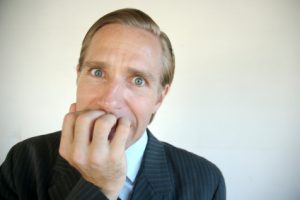
Commenting upon one’s state of mind or of body
Specific comments can be disruptive in this way; if a colleague inexplicably comments “is there something wrong, you don’t look you normal self today?” it can be taken as real concern or as a clever game; the brilliant 1920s books by Stephen Potter on “Gamesmanship” and “One-upmanship” perfectly encapsulated the deliberate attempt to broadside a rival or social inferior using a variety of funny ploys that nowadays seem unkind yet are still embedded in the psyche, in ways that Freud’s work on the neurotic shed so much light on.

You know the words but do you know the music?
When we include reference to our embodied state, it can help to clarify the meaning of our words (and where those words come into our heads from). Since we can get in a “real state” due to people’s words and just as easily “tread on someone’s toes” and “put them out of kilter” inadvertently, I will hopefully be able to explain more in York’s coaching Circle, how I work with clients in embodied ways to overcome this.

Pitch and Tempo and using the voice to impact performance.
Changes to where the coaching is carried out are important – taking clients away from their busy schedule and environment to peaceful and beautiful settings, walking in nature – role-playing similar but more impersonal scenarios with a more neutral position; stepping out of or away from the experience in real, physical as well as metaphorical ways; and working with the voice to show how the range of tonality, tempo and rhythm – working with the music of language, is truly the embodied link between what we can imagine and what we can actually do.

Dancing a dance comes from within: no amount of book-learning or talking about it, can take the place of the real feeling of movement. What we know about language acquisition reveals that prepping for a required outcome performance does not equate in any way to real acquisition – and this will be the same where shifting for changes in the coaching environment are concerned, or indeed any aspect of life.
What if it rains on the picnic?
If we organise a picnic, it’s not simply about deciding we want a picnic and then just having one. We first need to like the idea as well as find others who do, unpack the elements we and they choose and prefer, start to locate what else we need and think of where and when to do these things, before even attempting to actually go ahead. What if it rains on our picnic?

What’s the Objective – and subjective ?
Of equal importance arguably to getting the objective evaluations and validation of the outcomes-based goal – if it is in fact ever attained in quite the ways laid down by syllabuses and discourse models – is to get a subjective feeling of enjoyment and pleasure from everything we do, as in that way we do start to become masters of our own, entering the experience of life, whole and not disrupted, in tune with the reality we help to create.
In May 2018 I was proud to be involved in the York International Coaching week.  I spoke* at Peasholme House, the home of – and courtesy of Bob Dignen, Director of – York Associates. The ICW (full listings below**) is organised by Mr Peter Lumley, Chartered Fellow of the Chartered Institute of Personnel and Development (CIPD), and whose tireless work with Coaching York is putting this beautiful city well and truly on the map where coaching is concerned. *My workshop explored the importance of language mastery, and the cross-overs between language coaching and awareness, with topic/problem-based or situational-based coaching and mentoring, around personal and company goals and culture. It covered how more effectively to understand one’s physical response to a range of scenarios and thence embody purposeful and harmonious behaviour that is also conveyed in language. It thus focuses on how we understand and perform. There was also some analysis of personal and corporate “culture” as well as of the theory of chao-dynamics, looking at how outcomes emerge by dint of the mastery of language and the skilful ways in which communication is embodied. Please email me via info@tostig.co.uk There is a question in the back of my mind, preparing this, namely, what makes us want to listen and want to be involved; why do we sometimes “switch off” and why, at others, sit up in readiness? Embodied leadership states and how to access them, is a perennial aim for organisations wanting to avoid costly mistakes and get the best possible outcomes.
I spoke* at Peasholme House, the home of – and courtesy of Bob Dignen, Director of – York Associates. The ICW (full listings below**) is organised by Mr Peter Lumley, Chartered Fellow of the Chartered Institute of Personnel and Development (CIPD), and whose tireless work with Coaching York is putting this beautiful city well and truly on the map where coaching is concerned. *My workshop explored the importance of language mastery, and the cross-overs between language coaching and awareness, with topic/problem-based or situational-based coaching and mentoring, around personal and company goals and culture. It covered how more effectively to understand one’s physical response to a range of scenarios and thence embody purposeful and harmonious behaviour that is also conveyed in language. It thus focuses on how we understand and perform. There was also some analysis of personal and corporate “culture” as well as of the theory of chao-dynamics, looking at how outcomes emerge by dint of the mastery of language and the skilful ways in which communication is embodied. Please email me via info@tostig.co.uk There is a question in the back of my mind, preparing this, namely, what makes us want to listen and want to be involved; why do we sometimes “switch off” and why, at others, sit up in readiness? Embodied leadership states and how to access them, is a perennial aim for organisations wanting to avoid costly mistakes and get the best possible outcomes.

What would inspire me?
We confront the inevitable paradox: people are in positions who are in reality doing the opposite of what they are meant to do, or say that they are doing. The question arises, is this by mistake, by design, does it perhaps emerge from a sense of confusion? Is there even a perceived destabilisation culture, where we find ourselves having no other option, trapped, playing a role, wearing a mask that doesn’t fit too well?…. Consumer Strategic Insights (CSI) Director Jorge Rubio’s ‘Brain Spa’ was a kind of “creative space” designed to allow its participants to”set themselves free” of the numerous affective filters that prevent us from – as Jack Welsh was forever asking us to do – “reaching our full potential”, and removing barriers within the meritocracy.

How does this make you feel?
Language management, dealing with destabilisation in particular, is a way of delivering clear outcomes-based learning, incorporating a creative emergence of solutions at the same time. Outcomes-based notions are programmed into us from an early age; suffice it to say that the idea is pre-programmed into most children, as they grow up understanding that they need to learn (and often only learn) what is “in the test”. Cramming what I need to know “to get the answer right” is present in schooling and culture. It is there in the idea of the happy ending, of the end justifying the means, the ever-present teliological story format, the Tick-Tock that famously Professor Sir Frank Kermode referred to in his book, “The Sense of an Ending”. We live – according to this great critic – “In the Middest” and, this “Middle Time” – the age in which we now live – is characterised by a sense of permanent change, where what was “good” has declined and is in need of renovation. A process of painful purging needs to be undergone, which allows us to explain the chaos and ‘crisis’ we see unfolding around us. (Has some ancient trauma led to a state of amnesia in our deep collective unconscious perhaps re-emerging at troubling moments that we struggle to comprehend?)
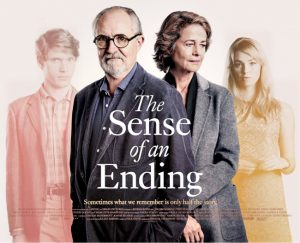
A recent film based around Julian Barnes’ reading of Professor Kermode’s theory
I read Kermode’s work when preparing my thesis in 1980 on Racine’s “Phèdre” and the idea that we already think we know the “ending” before it happens. Accordingly, in education, as in life and fiction, we feel the need to evaluate and be evaluated according to the “backwash” of expectancy, from the presupposed best or expected outcome – whether imposed by the parents, religion, traditions, the school system and its preparation for a career, or in work, the perceived company culture. Outcomes-based learning is a theory developed by John Biggs, using “constructive alignment”: we start with the outcomes we intend students to learn, and align teaching and assessment to those outcomes. Managerialism is explicitly eschewed within this theory, however.

How though, do we promote creativity, if participants believe there is a fixed outcome to be reached? As I shall outline in my talk, the way to bring about the emergence of creative solutions lies in how language is managed and in how we embody the process of change. Unfamiliar to many will be the work of Iyla Prigogine and Chaodynamics – that change is everywhere and in everything, that language is an attempt to make sense of natural state of flux, and culture is a way to fix and control or standardise the inevitable sense of destabilisation that comes from change. I have worked with this previously for many years and know it from political mechanisms of change as seen also in the works of Marcuse and Gramschi (I am not a proponent of these ideas) as well as in NLP.

Viscount Ilya Romanovich Prigogine 25 January 1917 – 28 May 2003) a Belgian physical chemist and Nobel Laureate
As Frank Kermode also pointed out, what happens is irreversible because of the inevitability of the ticking clock of time, and that what is said cannot be unsaid; actions, when carried through, are complete. A view of human interaction is also developed from the work of Ilya Prigogine, noted for his work on dissipative structures, complex systems and irreversibility. 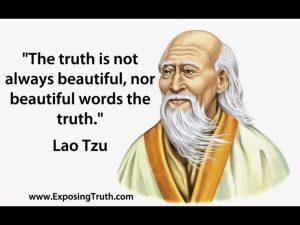
Managing one’s language implies a use of language to oppose the natural tendency to dissipation and destabilisation in complex systems, a kind of NLP for empowering – and to de-programme the mind and set it free. Prigogine developed the concept – at the University of Austin in Texas – of “dissipative structures” to describe the coherent space-time structures that form in open systems in which an exchange of matter and energy occurs between a system and its environment. This led to the theory of Chaodynamics and the idea of what he called a “concentric” approach to nature/communication to reestablish order after a major disruption. A good illustration of this can be found in theories of cultural change, and also, more negatively, as it is used in psychological warfare and in subversion tactics. In a demotivation stage, people worryingly and understandably feel bombarded with information and criticism, this leads to identity loss, and sometimes deliberately to the shaming of non-compliance. Acts or words that are violent or introduce sudden changes are used, silencing and censoring, and – in the most negative scenarios – setting up mechanisms of control through trusted accomplices and so-called useful idiots, or a sense of “us and them”. The coach’s work begins here to reverse this and re-establish truth and objectivity, establishing the principles of free speech and trust. Using language skilfully, the good leader or manager manages to bridge differences and overcome agitation from within, where the sense of disempowerment and imposition of a new narrative is often felt as being disenfranchising and as a real physical problem.

During a period of intense crisis, confused reactions and more identity confusion, loss of direction, even hysteria or blame are felt as a kind of internal warfare. The coach here listens and acts to encourage a clear and responsible use of words. By clarifying paradoxes, generalisations and unspecified references, deleted information, universals, or other presuppositions or patterns of language, that we note in NLP, we can bring about a creative outcome that is desired but not known or imposed from the outset. 
How, if a person is feeling intense demoralisation, can there be a change towards an empowered use of language that is at the same time elegant, powerful and poised? How do we bring gracefulness into an obviously stagnant sense of discomfort, or damaged stalemate?

In what might be considered a “normalisation” phase, the coach or other responsible actor – whatever their position – has a difficult task in liberating one who is at a stalemate or downward spiral, and challenging those who are perceived as aggressors, to reform their patterns of behaviour via critical thinking, open speech and by opposing authoritarianism or utopian thinking. So, looking at the “positive” side to this…. The coach works with perceptions in language with those perceived to have caused a de-stabilisation and and in order to establish facts in a neutral way and restore grace, poise and meaning to what is otherwise seen as desperate. This is then embodied in a physical way, turning defeat into victory and bringing about healthier, more mutually-beneficial outcomes.
** For the full listings and details please read here: ICW Events Listings2018 (1)
Our words and actions – even the smallest ones – affect our state of mind.

A research paper recently published, conducting a textual analysis of 63 Internet forums (over 6,400 members) used linguistic inquiry and word count software to examine “absolutism” at the linguistic level. Its results provide clinical evidence of how several features reflect meaningfully the state of mind of the speaker or writer.
This will not come as a surprise to language teachers, to counsellors, or to coaches who pay attention to the words their clients use. Some years ago, James Pennebaker’s excellent and provocative book “the Secret Life of Pronouns” engaged us in this topic, and – long before – the founder of Hypnotic therapy, Milton Erickson wisely stated “The map is not the territory” – in other words, the way I see the world is not necessarily the world itself, only my personal version of it filtered by my words and images and feelings (and those handed to me).
Nowadays there is a lot of faith put in positive thinking, and this is not so new…
“On how one orients himself to the moment depends the failure or fruitfulness of it,” Henry Miller asserted in his beautiful meditation on the art of living, “The Wisdom of the Heart”. This is not to be confused with coaching that tries to impose a glamorous target-oriented “successful” way of fitting in, viewing unhappy people as self-sabotaging, and as Susan Scott has asserted, toxic to the organisation that they work in. While not disagreeing with the importance of “Mastering the courage to interrogate reality” and the emphasis on truthfulness to oneself, I find the insistence that being unproductive is something to be confronted with brutal non-compromise to be disconcerting where creative solutions are concerned.

Our constant escapism from our own lives is our greatest source of unhappiness.
Today’s Millennial generation – anxious to impress and to succeed at the expense of the deeper more fulfilling aspects of life – might think of the advice given by the famous Danish philosopher, Kierkegaard, who was only thirty at the time he wrote them. He began a chapter of his altogether indispensable 1843 treatise “Either/Or – a Fragment of Life” with a powerful observation – so relevant today, amidst our culture which considers being busy and forever dwelling on the mistakes of the past and the high goals of the future to be a badge of honour:
“Of all ridiculous things the most ridiculous seems to me, to be busy — to be a man who is brisk about his food and his work.”
In the chapter “The Unhappiest Man” he wrote “One is absent when living in the past or living in the future.”
We should not be, as the great Alan W Watts described “The working inhabitants of a modern city … people who live inside a machine to be batted around by its wheels.”
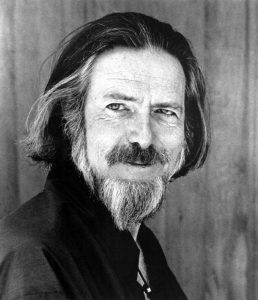
We live today with such anxieties, reflected in our depressive language and sometimes futile attempts to reverse our sadness with New Age collective thinking and coaching “success” that we never find our true balance. Watts, in his book “Wisdom Of Insecurity: A Message for an Age of Anxiety” continued: “If we are to continue to live for the future, and to make the chief work of the mind prediction and calculation, man must eventually become a parasitic appendage to a mass of clockwork.”
Amusingly, in the film “Being There” the chief protagonist’s simple and naive words and childish world-view are taken as great wisdom, when they are merely misunderstandings. Yet Erickson reminds us that the truth emerges from the unconscious and not the frantic analysis of the rational mind. Neuroscience reinforce this message, since the over active mind racing in Gamma Wave exultant “highs” soon crashes down to the comatose state of burn-out and despondency.

States of Mind
Every so often new “models” appear incorporating the latest acronyms and buzz-phrases, and without doubt, from the groundbreaking 1979 “Inner Game” of Tim Gallwey, Sir John Whitmore’s 1992 GROW to the many more being designed in the present day, many present key words and phrases that help focus the conscious mind – even to the exclusion of all else. However we should strive as coaches not to crowd the mind with ever more models, but to enable new and creative forms of words; not to constrict by imposing models that others have determined that may work for some – but not for the person in front of us.
In my article in the latest edition of iCN (International Coaching News) I make the case for a truly embodied approach to listening, thinking, communicating and acting.

Using English well in an international context is as important for native speakers of the language as it is for non-native students and other international users of English.
Whether this is because English happens to be the lingua franca of the organisation, company, corporation or community, or because those involved in any meeting have chosen to use English themselves, there is every chance that there will be people with differing ranges of experience and ability in the language, just as this would also be the case with people speaking French, Hungarian, Russian, Spanish, Mandarin, Turkish, Arabic, Swahili or Gaelic!

Who of us can say we would be confident to attempt to do all that we do in our own language in any other language? We can perhaps learn how to order a prawn sandwich or a taxi, or to greet someone at the airport, wish them a good journey or thank them for their help. This does not take long and is a sensitive and polite thing to do when doing business with others. It shows that we have made a little effort to learn about their ways.
Just as we can learn a few words, we can also learn about the cultures we interact with.
This process works both ways, because – though there is common ground within cultures for anything that we may need to discuss, and certainly room for exploration in a number of areas (or business would never happen or have been going on for thousands of years!) – there are also certain highly sensitive areas of “sacred ground” where discussion may be very difficult or even impossible.
Encroaching on these sensitive spots is risky and potentially rude. This is as true of the English-speaking culture as it is of any other.
The things that affect our identity are hard to define and having a well-researched book to refer to is essential; I recommend Richard Lewis’ excellent work for a clear and intelligent model when entering new ground in any culture.
Where the deeply-embedded elements of a culture’s specific core value system and the individual’s own modus operandi can have multiple layers that are not open to scrutiny, the language itself can give us the clues we need to how a people think.
We should take care with our words whether with other native speakers or with non-native speakers.

The Ratners Jewellery store in Regent Street, London, part of the chain owned by Gerald Ratner, which made a 112 million profit in 1990.
Careless language can be very costly.
A famous story is that of successful businessman Gerald Ratner who in 1991 wiped £500m off his share value with one speech, when talking of his own high-street jewellery, he inadvisedly announced it was “cheaper than an M&S prawn sandwich and probably wouldn’t last as long”.
Another story is that of the Topman clothing chain and the firm’s brand director, David Shepherd, asked in an interview in 2001 to clarify the target market for his clothes, he replied: “Hooligans or whatever.” He went on: “Very few of our customers have to wear suits for work. They’ll be for his first interview or first court case.”
The company later suggested that the word “hooligan” would not be seen as an insult among its customers.

Such careless words may seem amusing or tough but they have consequences. In 2006, John Pluthero, the UK chairman of Cable & Wireless, sent a memo to staff, which said: “Congratulations, we work for an underperforming business in a crappy industry and it’s going to be hell for the next 12 months.” He warned of job losses and added: “If you are worried that it all sounds very hard, it’s time for you to step off the bus.” Many did just that and found work elsewhere.
Another pitfall is translation and translation devices. They are not capable of understanding cultural and linguistic nuance. The ambiguity of translation is well summed-up with the example of a biblical quote, meant to express the struggle facing the industry at that time and to motivate the employees to make an extra effort, and that was used in an after-dinner speech translated into German
“The spirit is willing but the flesh is weak”.
This came out as “The schnapps is strong but the meat is rotten”

Language is not a set of conditioned responses triggered by previous words, because we can change these patterns at will. This allows us creativity and individualism. Chomsky’s “poverty of the input” hypothesis tells us that what a child can produce in language is MORE than the input they have received via their parents or peers. This “new potential language” has come from within the child as he/she has acquired the deeper syntax. Somehow, the child knows that the structure “Daddy what did you bring that book that I don’t want to be read to out of, up for?” is the only right use of syntax for English, for this question.
Pace is a deciding factor. People are more inclined to get excited and emotional speaking their own language than speaking English, this is hard to lose in a foreign language, suggesting that the control of output and having to pace themselves, will affect themselves and others
Impact
There are several negative and positive associations: native speakers are imagined to have more sensitivity but often they have less. Consequently natives can benefit from observing how a non-native speaks, or try to compose themselves in FL to see how it feels.
Having a slower pace enables better listening and more self-composure. However the emotions inside the L2 speaker are likely to be very high and for the L1 speaker, having to modify their language to obtain better results may at times feel frustrating, too.
At P.i.E. we can help you develop sensitivity to language that leads you to better outcomes. As a non-native we can show you how English works and how to use it effectively, in your own specific situation, according to different scenarios and your personal choices, understanding norms and idiosyncrasies.
Equally important, as a native speaker we can show you how good language management will lead you to better relationships, deeper awareness of communication and the avoidance of costly mistakes, and to a level of self-composure that is not over-confident but mature and manifested in a spirit of mutual respect.
One of my clients not long ago was the kind of person you’d look at and immediately think they were totally in control and confident.
The Financial Director of a multi national company is usually bursting with inner confidence, yet, after finding out that he had to start using English for his board-level presentations, he had discovered that he was extremely nervous about doing this (especially in larger groups or more than about 4 people ) – something he’d never have thought would happen! So how did we help him?

He understood that it is an important thing to be able to communicate internationally; he knew that because we live in this increasingly interconnected world, using English enables you nowadays to be more successful by accessing more opportunities and connections, and that this was in any case necessary for him to retain his position….
He recognised the importance, in our rapidly-changing world, not only of “connecting” with other people who live in different countries, even with their culture and their way of thinking, but also shared with others the feeling of how tremendously enriching to life this can be. He realised how valuable the new “global” aspect within his organisation, was and is.
But this was not exactly the problem. If anything, knowing all this and being reminded of it, as his company underwent significant and far-reaching changes internally and externally, was adding to the problem even more!
This hard-working man loved fishing; his English was relatively low-level but adequate for the task of reporting to his Board; and he was terribly blocked; afraid; sweating in front of his audience; his voice shaking, he was very red-faced.

He had been very quiet on arrival, it all came out when I took him out for a meal and he explained that all the English language teaching and correction and instruction in cross-cultural communication that he had received in other places; the do’s and don’t’s; all the sentences and key phrases to repeat; all the reams of photocopied vocabulary – that he sort of knew anyway passively – the “enforced scenarios” he had to prepare for the next lesson, all the things we tend to find in schools were useless to him.
He told me how all the “cross-culture” training was making it worse; the endless corrections, more pressure, more theory; more “do’s and don’t’s and so on…. he needed to get over that, but he didn’t know how.
I found the way with him, by judicious use of NLP visualisation and anchoring techniques, shifting his associated problems by dint of changing his emotional associations, dissociating him away from the issues, and putting new thoughts and connections in their place.
It worked, overnight, after a short “out-of-context” chat in a restaurant, eating fish together and talking about fishing – in a certain way.

Sadly some may have had the experience after previous training and learning, of feeling worse than when they arrived – both on paper tests, and in real life – and therefore very dissatisfied. Poorly-devised training or blanket solutions (one-size-fits-all) can indeed make things worse.
As a proviso here, language schools do have their place but often cannot offer that specialised coaching which meets each individual’s needs….and being with clients of other nationalities does not always offer the right combination of guided acquisition and pleasant immersion in the language and culture which makes for more effective and rapid acquisition.
That is why at PIE we use many different techniques and according to the specific needs of the client. We use absolute discretion, go wherever needed, and spare nothing in terms of flexibility and total listening to the client, to ensure that the outcome is good.

How to be a Brit
The Hungarian journalist and BBC reporter, George (György) Mikes – pronounced / ɱ ‘i: ke ʃ / – commented wryly in his book “How To Be An Alien“ (1946), a classic of “British humour”, when – as a foreigner in England – he realised the importance of having a “suitable” accent:
“My dear, you really speak a most wonderful accent, without the slightest English!”

Accents are of course connected to our origins and culture. There are national, regional and individual accents and these can link a person to social class, educational background, and character.
Who am I?
As many academics have shown over many years, the whole concept of one’s identity as a person cannot be separated from language. Languages express emotions, facts, notions of time, space and morality, in different ways, and arise as the communication surface structure built on generations of history, tradition, law, belief and education. How we perform depends on first how we understand, process and compose language.

Outcomes-based coaching and learning
There is the larger question of how English, as an international language, can serve to perform acts of identity that are specific to one’s own language. As linguists have tried to show, all languages share some deeper, innate, structure or else how could the same human being, theoretically, be born anywhere on the planet?
Mikes started his famous book with the words “In England, everything is the other way round”.
Culture itself cannot be entirely systematised, despite the efforts of anthropologists, psychologists and sociologists. Along with dress and other customs and habits, language is the outside sign of what a person deems themself to be. Actors, who play the part of another culturally different person, in the theatre, see this very clearly.
Consequently, as soon as we open our mouth, we “give away” something about who we are and how we wish to be perceived by others. The process of “acculturation” – the process of internalising the implied rules of a “discourse community” – is something that anyone who lives or works with other language groups or nations, understands from day one. Culture “shock” can be one outcome of this difficult process. Bridging differences effectively, means using language very skilfully and being sensitive to culture.

Isn’t it?
For the learner of a second language, there results from this the thorny question of how to “sound right“. In some ways this leaves one free to choose the model one prefers, to “sound” correct in whatever circles that person happens to frequent.
It’s quite well-known that the use of question “tags” is a feature of spoken English:
“It’s a lovely day, today, isn’t it?”
“Oh yes, they said it was going to rain, didn’t they.”
“It’s so nice when it’s hot, isn’t it.”
“Yes I love it, don’t you?”
As George Mikes observed, “In England, you must never contradict anybody when discussing the weather.”
Similarly, the words Yes and No – straightforward as these may seem – are loaded with difficulty, and cultural overtones, when we say “Yes” but mean “Maybe”; or when we say “No, I don’t mind at all” – and mean “That’s absolutely fine!”
In addition to the vexed question of “British understatement”, there is the related issue of the “proxemics” of a given culture and the register of particular words and phrases. How should we “act”? How close should we stand to another person? How soon is it appropriate to ask a personal question? How direct or indirect is it appropriate to be? The exact combination of phonetic training, listening to sounds, using the voice and breathing in order to “come across” with confidence and fluency, is something that requires a thorough analysis and discussion.
Contact us to find out more!
“You never listen!”
How often a frustrated teenager might say that, and, in business too, how often people might be thinking this, but they do not say it – and barriers are building up, unseen?
How do we “get” people to listen?
Are we “really listening“?

A child might have listened a hundred times to the being told he/she should clean their teeth every night. But do they do it?
As the saying goes, it takes patience to listen but it takes real skill to pretend that you are. And while this is not something we recommend at all, many people are good at pretending! All the outward signals are there to convince the other person ……
In today’s busy world, where time is always pressurised, arguably there is a lack of true care for others in society. We “listen”, but is there any inner processing going on?
Plus, what works with talking to children doesn’t not necessarily work the same way when dealing with business associates etc.. If we are not listening, what alternative does that give to our colleagues?

Good listening matters at every level.
Everyone likes to think they know best, so, listening to what another person needs to say, attentively, is not just a real skill, it is also potentially a means for powerful change. How do we do it, when our own heads are so full of stuff we are desperate to get done, and get said?
It is important to remember that not everyone wants to be the one “up there” doing the spotlight work and receiving the credits. There is equal importance in what we do to help people achieve their own personal goals, wherever they work.
That goal might be to speak and understand English fluently and effectively, whether they are the Managing Director, in the back office, or at the front of house in a retail role. Having the right skills to really hear what is being said, can change the way an entire organisation works.
Actually, when there is good listening, all sides listen and benefit.


So you’re a top actor and suddenly you’ve got stage fright and it’s becoming an issue. You know you need to address it but you feel you should try to just get on with it.
But it becomes more of an issue.
Or you’re a business leader who suddenly seizes up in a presentation and this now plays on your mind!
You can’t stop thinking about it and the problem gets worse.

Both these scenarios happen often. Sometimes people get through on their own but if they can’t that is where we come in.
If the person is trying to communicate in another language then this adds another dimension.
Confidence may need rebuilding or temporary nerves addressing.
By a skilful combination of working through the issues, and along the pathways of understanding – processing – self-composition – performing we help you to:
Like the new actions and goals you are engaging in and working towards
Unpack the elements and get them in order, seeing them clearly
Locate the best means – for you – of working through them successfully
Use the best techniques and approaches to ensure great outcomes
Contact us today!

What is success?
Certainly, from a coaching perspective, it is reaching one’s goals.
The famous holder of the world land speed record (and on water too), Malcolm Campbell, famously said:
“When you have reached your goal, set yourself another“.

His son, Donald, continued the proud tradition of tempting fate and taking speed to the limit.
On that fateful day, on Coniston Water, England, on the 4th of January 1967, Donald Campbell had broken the water world speed record, and he wanted to do even better. He turned the Bluebird, and, fearing a change in the weather, sped across the water once more. Onlookers were horrified to see the boat flying up into the air and crashing down on its back, into the waves. These waves were the remnant of the wash that Campbell himself had created on his earlier and successful attempt.
Some might justifiably say, it’s important to know when you have done enough!
We have met and worked with hundreds of people, some who needed to go “just that little bit further” and others who had a “mountain to climb” or who “made huge improvements in no time at all”!
Our job is, that by giving prompts and tools the client is empowered to make inner changes themselves; the coach is a facilitator, not some kind of guru!
Everyone is a kind of expert who can tell you how to do things and what to do. But actually the only expert on you is YOU.
Just as only YOU can interpret the messages in your dream, 20 people can give the same presentation but it will be different in each case. Some will connect with their audience but others will not? Why is this?
This is where a great coach can make a world of difference.
Acting when the time is right, making the critical decision, knowing when to act and when not to, and acting swiftly and decisively, or taking one’s time to think things through.
The difference between winning that business contract or not; the difference between being successful in something or not; between becoming excellent at something, and going far enough to know what success feels like.

“Hurry boys, hurry, we have to make a quick change or the hour will be up.” – Donald Campbell

Cherubs with bumble bee (after Michelangelo)
As visitors to this site and blog may know, Peter is a painter, and enjoys the rare times he finds to paint.
Painting offers an opportunity to reflect on life and to decide how we derive pleasure from the many things we see, do and experience.
The whole process of thinking opens up doors that sometimes prefer to remain shut!
There are many things said nowadays about how our thoughts influence our feelings, actions and experience of life.
From the idea that we should train our mind to see good in every situation and the idea that positive thinking creates energy, initiative and happiness, comes the opposite one – which follows from the first – that “the discontent and frustration you feel is entirely your own creation”.
This, however, is not at all fair to the person whose thoughts are sometimes a jumble of conflicting voices.
From an NLP perspective, the words we hear inside our head are not our own but often borrowed from what we have heard, seen and felt, from others.
What’s important is to clear up the ones that we have borrowed from elsewhere and have become ‘stuck’ – and those that reflect our deeper and lasting goals.
This is so important when we are coaching.
Learning a language can provide an opening to a whole new way of experiencing the world.
Things suddenly become very clear when we see them in new ways!

We cannot stop thinking – though as the Chinese philosopher Lao Tzu believed: Stop thinking, and end your problems!
Certainly it helps to be able to switch off one’s wandering thoughts and focus on the discipline that being with a coach, provides…. at P.I.E. above all, we focus on a relaxing and thought-provoking approach that enriches the experience the learner is having, whilst helping them to avoid the pitfalls of over-thinking, which can be confusing and counter-productive!
It’s about doing inspiring things that will always be remembered, not trying to force learning!
As another great thinker – Plutarch – said,
The mind is not a vessel to be filled, but a fire to be kindled.


Julia, our expert in voice coaching and performance skills in acting, says:
“I guess the basic thing for attracting people to a blog is – if someone has a lack of confidence – they’ll be looking, not a t blogs which talk about “acupuncture”, but at blogs that talk about “confidence“!!
“Talking about methods is useless without a ‘hook’ of a problem people want to address, such as confidence tools, communicating with confidence, the projection of confidence…”
She continues: “…..people think acting is different, but it can help with meetings and business in fantastic ways!”
“There’s the issue of confidence… when feeling nervous, the actual confidence which comes from knowing you can handle a meeting does not imply that the methods a person uses will create total confidence without nerves, but that the adrenaline or nerves are controlled – like a trained animal!”
“I’m thinking of acting as an example… and I did give talks too as a child – it was scary but I did it, the English Speaking Board; you had a prepared talk then the examiner would discuss other things you were interested in and define ONE. It was quite something really! there were other people there too, an audience of family…”
For her – whatever the age – being stuck in front of a load of people and an examiner was daunting… and at PIE we use NLP and hypnotherapy too, to overcome issues.
“The prepared talk was fine, then the impromptu talk was shorter and I recall I had a few minutes to ‘create’ a structure in my head… I was young! I remember my mum in the audience all red faced but proud! I think that elocution helped because it gave a focus too regarding HOW I was to convey the talk.”
There were the background tools of emphasis and pacing and how to make the voice carry to the back of the room, and the breathing also to control nerves… picking a subject and making it interesting; picking out main points… That is what people identify with!”
“Otherwise a blog is a professional ‘paper’ and detached from their own experience; it is about connecting so they see their own problem in it and see how you’ve addressed it.”
In “the Third Tribe”, Chris Brogan is quoted as saying that the heart of good blogging is addressing people’s pain. Most of us are familiar with the saying “People don’t google ‘aspirin’; they google ‘headache’.”
As coaches, we’re solving the problems that people would google!
I have just finished my latest painting, several days’ work!
Click here to view my paintings and to ask about commissions, contact me!
New calendar for 2016 featuring original fine art oil, watercolour and gouache paintings by Peter…
Stay in Touch
choose your language to view this site
tostig-PerformanceinEnglish company information
ZOEFTIG (TOSTIG)
Address:
West Paddock
Massey Lane
BB9 5JT
Pendle
Lancashire
t: +44 (0)7708364021
e: info@performanceinenglish.com
info@tostig.couk
D-U-N-S® number 21-693-0166
Companies House UK 7397654
Pages
- About Us
- Blog
- Calendar
- Change Management where English is the lingua franca
- Coaching Articles
- Elocution
- Exam preparation
- FAQ and contact form
- Home Page
- Intensive coaching the UK
- Job-oriented promotion coaching
- Listening skills
- Miscellaneous
- NLP/Hypnotherapy
- Other services and information
- Performance coaching with Embodied Leadership
- PIE for Actors
- Places of Interest
- Portfolio
- Privacy Policy
- Skype coaching
- Testimonials
- University academic pre-sessional
- VIP and high-status individuals
- Virtual Coaching and Training
- Voice and Leadership Coaching
- What is involved in Performance in English coaching?
Proud to be a long-standing Associate of..
Delighted to be collaborating with Learnlight, HR, L&D and Global Mobility leaders

Pleased to be working with Titanium Tutors

Certificated GLA (Global Leadership Assessment 360˚) the world’s no.1 Leadership Coach

Freelance trainer with CERAN

We are proud to be associated with agents:

Associated with Coaching York












